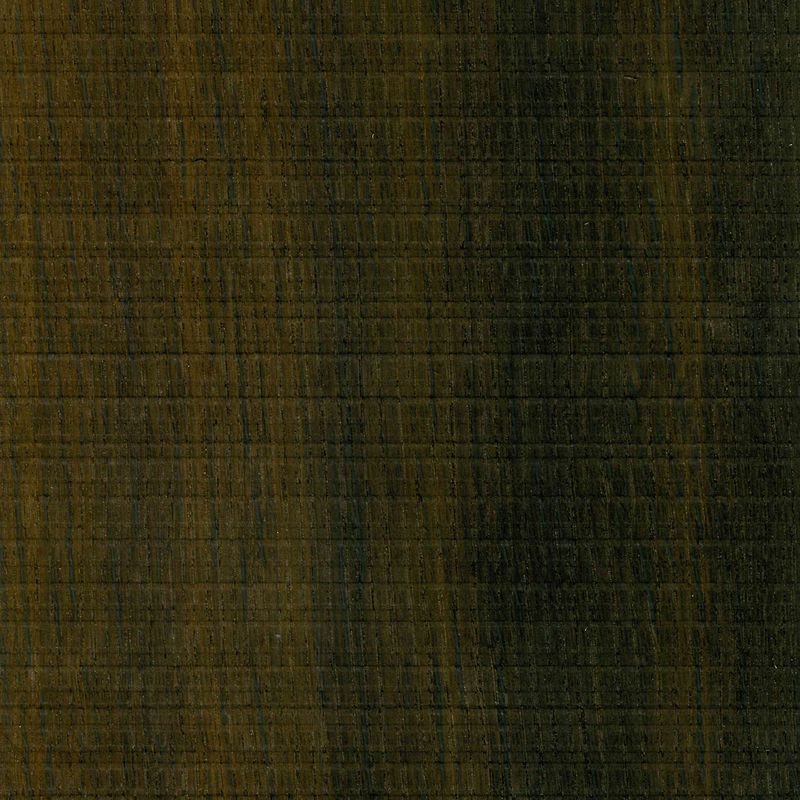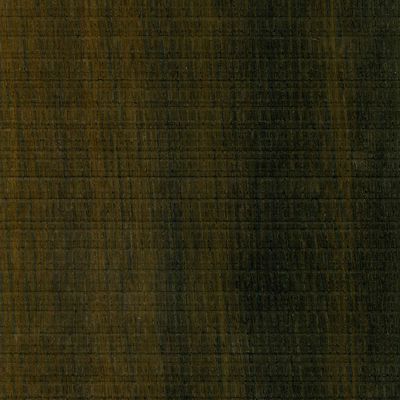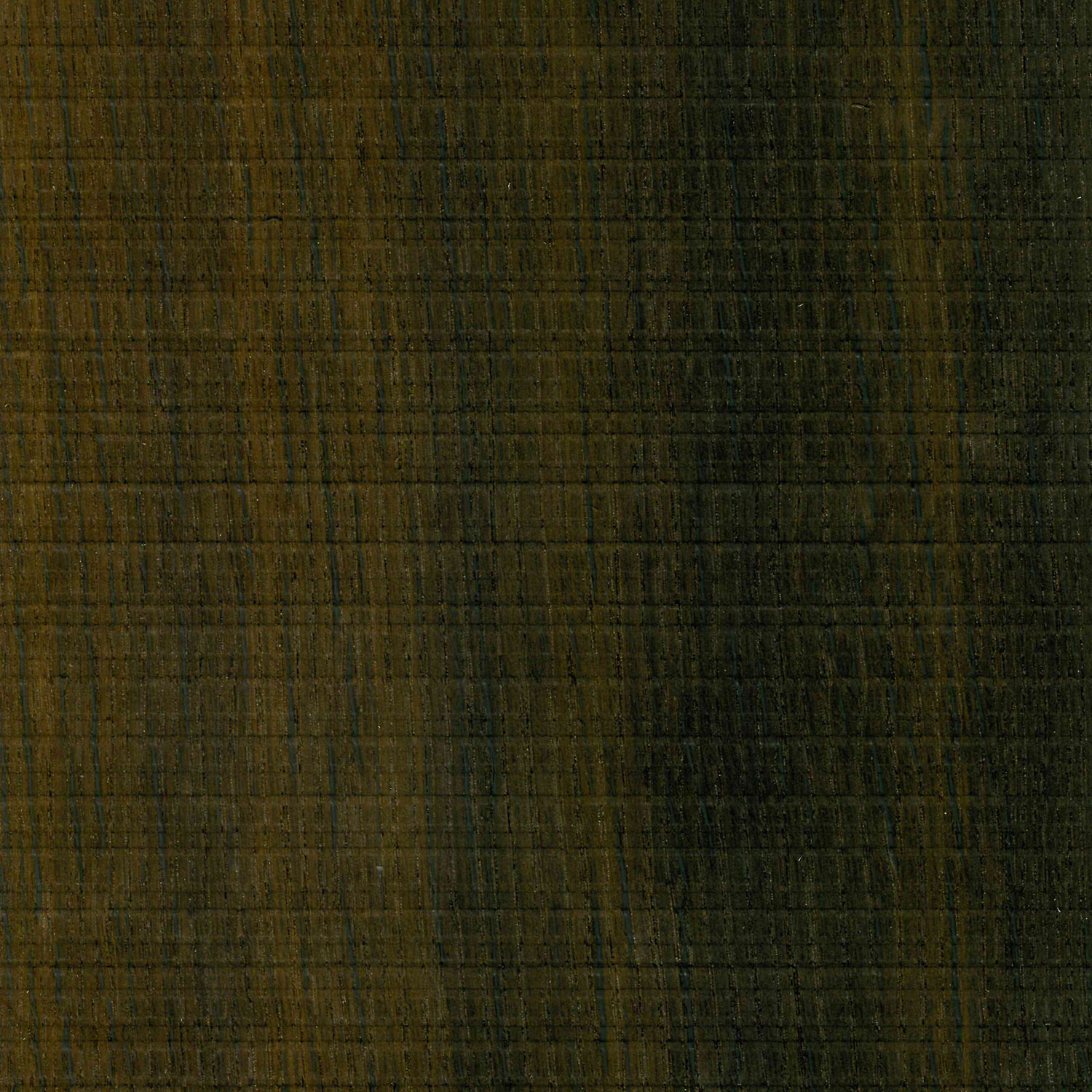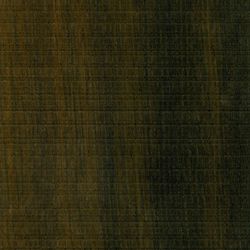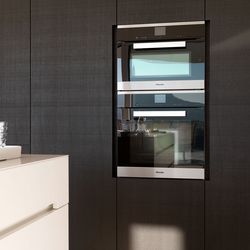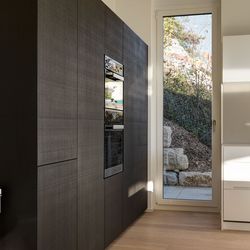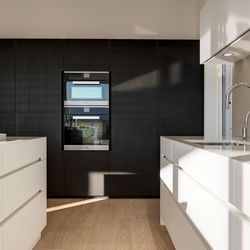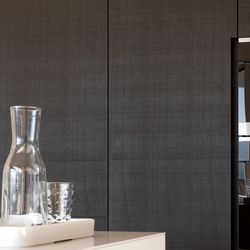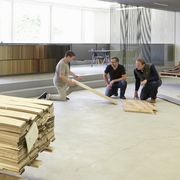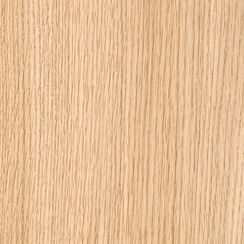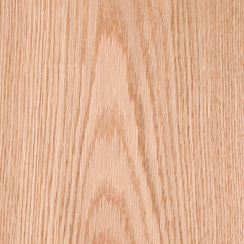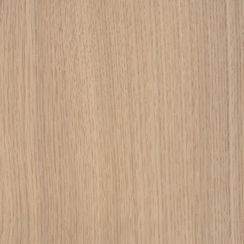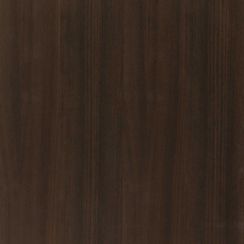Make an appointment at our concept.room for your individual project consulting
Veneer Oak smoked Rough Cut
BackIf there is partial glue penetration, it can be brushed out at right angles to the grain after pressing. We recommend to veneer a few samples in advance to get a feeling for the ratio of glue application and pressing pressure.
When smoking wood, the tannic acid present in the wood reacts with ammonia. At the end of the process, the ammonia is neutralized with sulfuric acid. This leaves a fertilizer, which is used in agriculture. After the smoking process the wood gets a durable, attractive and very light-stable dark color.
Since ammonia may still be bound in the cell walls of the smoked wood in isolated cases, it is recommended to allow the veneer sheets to air well (approx. 3 - 4 hours) after cutting them to width and before joining them together. This allows clean joint gluing without any problems.
Detailed Description
In favourable locations it grows to 50 m high with diameters up to 200 cm, but usually shorter and weaker. The shaft is well grown throughout, often twisted and knotless up to 15 m. The bark is thick, deeply cracked lengthwise and dark grey. The tree reaches a high age of several hundred years.
Tradenames and other names
Bot. Name: Quercus spp.
Tradename De: Eiche Sägeroh geräuchert
Tradename En: Oak Rough Cut Smoked
Properties
Raw density: 430 - 960 Kg/m3
Occurrence
The oak is spread almost all over Europe, namely in Norway up to 63 degrees northern latitude and in Russia up to 57 degrees northern latitude, as in the Caucasus and in Asia Minor, furthermore in the south up to central Spain, Sicily and also on Crete oak is found.
Characteristic and wood color
Sapwood and heartwood are sharply separated. The sapwood is generally narrow and yellowish-white. As it is not weather-resistant, it has no economic significance and is removed before processing. The heartwood is greyish-yellow when freshly cut, later darkening to light to dark brown when exposed to air. Annual rings and growth zones are not clearly visible. The pores form an uninterrupted transverse zone in the early wood of the annual rings. Medullary rays broad and very clearly visible. They form unevenly sized and differently shaped "mirrors" in the quarter section, which are characteristic of oak. The structure varies according to location and age, usually straight to twisted, the texture also varies from fine to coarse.
